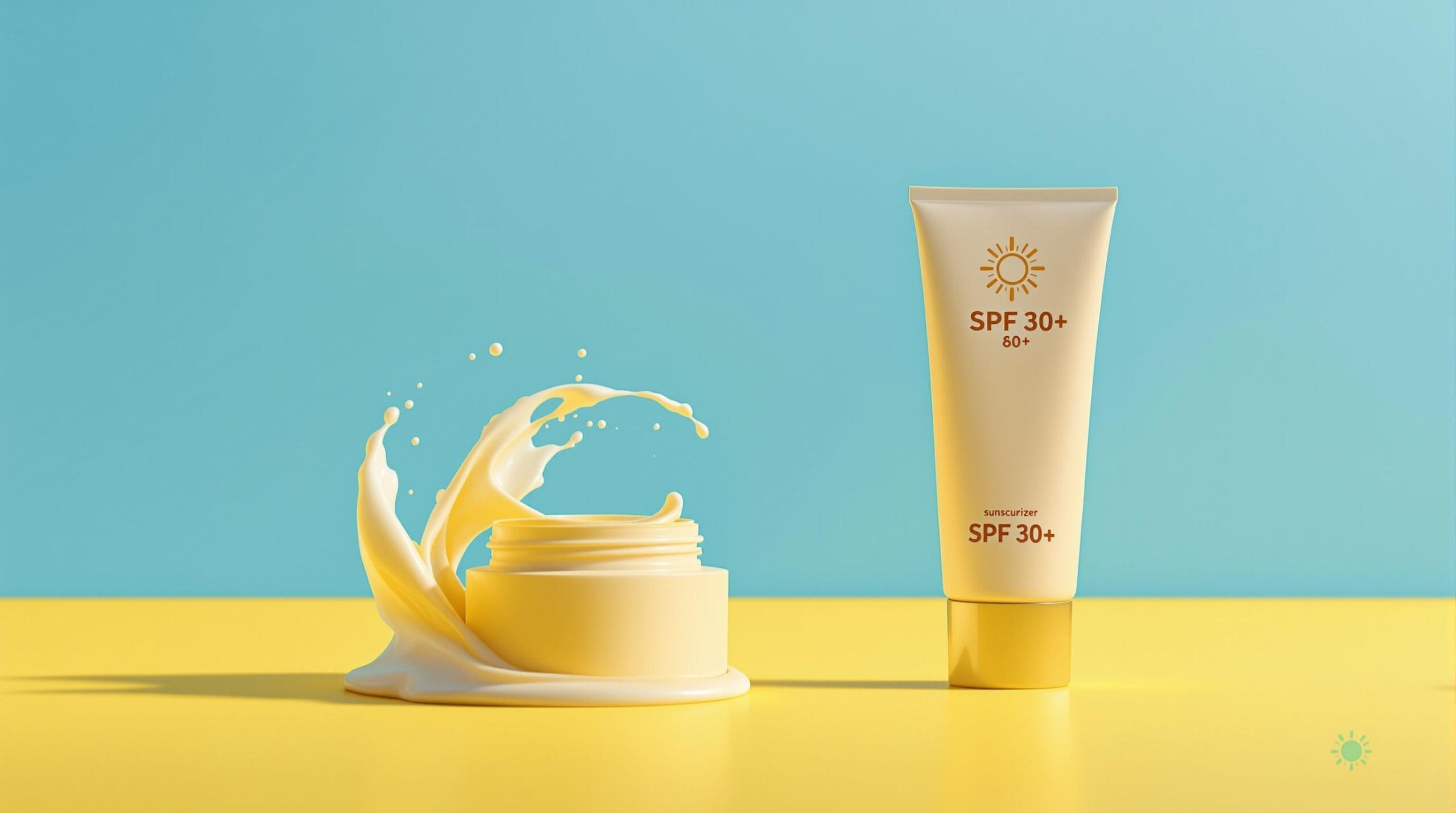
Sunscreen is a crucial part of any daily skincare routine because it protects the skin from harmful UV rays. However, a common question arises: “Can I apply sunscreen after moisturizer?” The answer is a resounding yes. Moisturizers and sunscreens complement each other by hydrating the skin and providing a protective barrier against sun exposure. This combination offers the best results for maintaining healthy and protected skin.
When you apply sunscreen after moisturizer, you ensure that your skin receives the necessary hydration first. The moisturizer helps to lock in moisture, while the sunscreen creates a shield on the skin, preventing UV damage. Understanding the order of application can make a significant difference in the effectiveness of your skincare routine.
Sunscreen 101: Understanding the Basics
Sunscreen serves as a critical barrier against the sun’s ultraviolet (UV) radiation, which poses risks such as skin damage, early aging, and heightened chances of skin cancer. There are two primary categories of sunscreens: chemical and physical. Chemical sunscreens work by absorbing UV rays through chemical reactions, while physical sunscreens provide a reflective shield using ingredients like zinc oxide or titanium dioxide.
Daily application of broad-spectrum sunscreens is crucial, no matter the weather or your indoor activity, since UV rays are capable of penetrating windows. For effective protection, choose a broad-spectrum sunscreen with a minimum SPF of 30. Consistently using sunscreen safeguards your skin’s health and mitigates UV-related damage. Incorporating it into your skincare routine significantly lowers the risk of sun-related skin issues.
The Magic of Moisturizers: Why They Matter
Moisturizers are essential in skincare, providing much-needed hydration and reinforcing the skin’s natural barrier. They incorporate moisture-attracting ingredients like hyaluronic acid and moisture-retaining agents such as ceramides. Utilizing a quality moisturizer establishes a foundation that keeps skin hydrated and optimizes the effects of other products, including sunscreens.
Applying moisturizer before sunscreen readies the skin to absorb hydration and creates a smooth canvas for the sunscreen. This order helps maintain skin protection and nourishment throughout the day. Regular use of a moisturizer can enhance skin texture, bolstering its defenses against environmental stressors.
How to Layer Products Like a Pro!
To achieve the best results from your skincare routine, it’s crucial to apply products in the correct order. First, cleanse your skin and apply any serums or treatments you use. Next, apply a generous amount of moisturizer across the entire face to ensure thorough hydration. Allow the moisturizer to absorb fully, which usually takes a few minutes, before moving on to gel-based sunscreens.
For sunscreen, apply enough to cover your face and neck entirely. Experts suggest using approximately a nickel-sized amount for optimal coverage. Gently rub the sunscreen into your skin until absorbed. By layering in this order, each product serves its purpose effectively, providing hydration and sun protection throughout the day.
Moisturizer First or Last? The Ultimate Decision
The general consensus among skincare experts is to apply moisturizer first, followed by sunscreen. This method ensures that your skin benefits from hydration while still being adequately protected from UV rays. Some might vary their routine based on personal preferences or skin type, but for most, moisturizer first and sunscreen second works best.
Common Mistakes in Sunscreen Application
One common mistake is not allowing enough time for the moisturizer to absorb before applying sunscreen, which can cause ineffective protection. Another error is using an inadequate amount of sunscreen, reducing its ability to shield against UV damage. Ensuring you cover your face, neck, and any other exposed areas adequately helps in maintaining good skin health.
DIY Sunscreens: Creative Alternatives for Protection
If you’re inclined towards natural skincare solutions, creating DIY sunscreens can be an interesting option. Many recipes use natural ingredients like coconut oil and carrot seed oil, which offer minor SPF benefits, coupled with zinc oxide for physical protection. These homemade variants can supplement your routine but should not replace store-bought options with tested efficacy.
It’s important to remember that DIY alternatives may not provide the same level of protection as commercial sunscreens. They can, however, be used in conjunction with professional products for added hydration and skin nourishment. Always test these mixtures on a small skin area first to avoid potential irritation.
FAQs About Sunscreen and Moisturizer Pairing
A common concern is product pilling, where products ball up on the skin. You can avoid this by allowing each layer time to absorb before applying the next. Queries also arise about specific skin types—those with oily skin may prefer lightweight formulas. It’s crucial to reapply sunscreen every two hours, especially if exposed to the sun, to maintain protection.
The Bottom Line: Protect Your Skin Wisely!
Applying sunscreen after moisturizer is a straightforward and effective strategy for safeguarding your skin. By following the recommended order, you maximize both hydration and UV protection. Building this habit into your daily routine ensures your skin remains healthy, radiant, and well-protected against the sun’s harmful effects.
Share Your Thoughts: Join the Discussion!
We’d love to hear about your experiences with sunscreen and moisturizer application. Do you have any tips or stories to share? Feel free to leave a comment below and join our skincare community in discussing your favorite products and methods.







